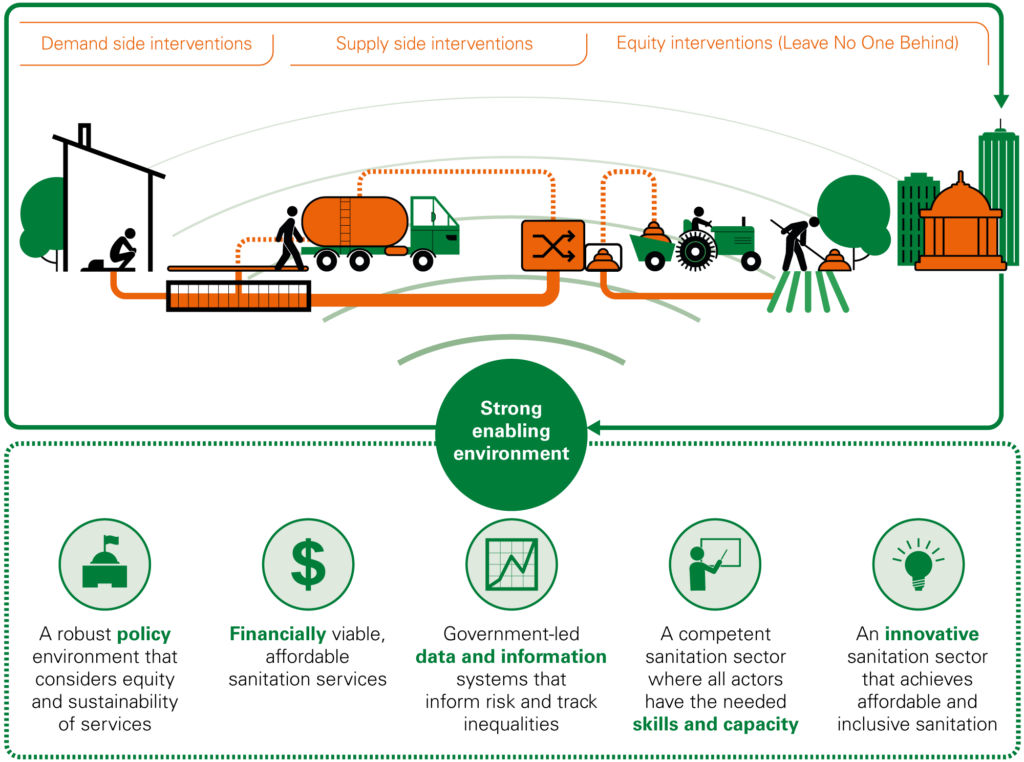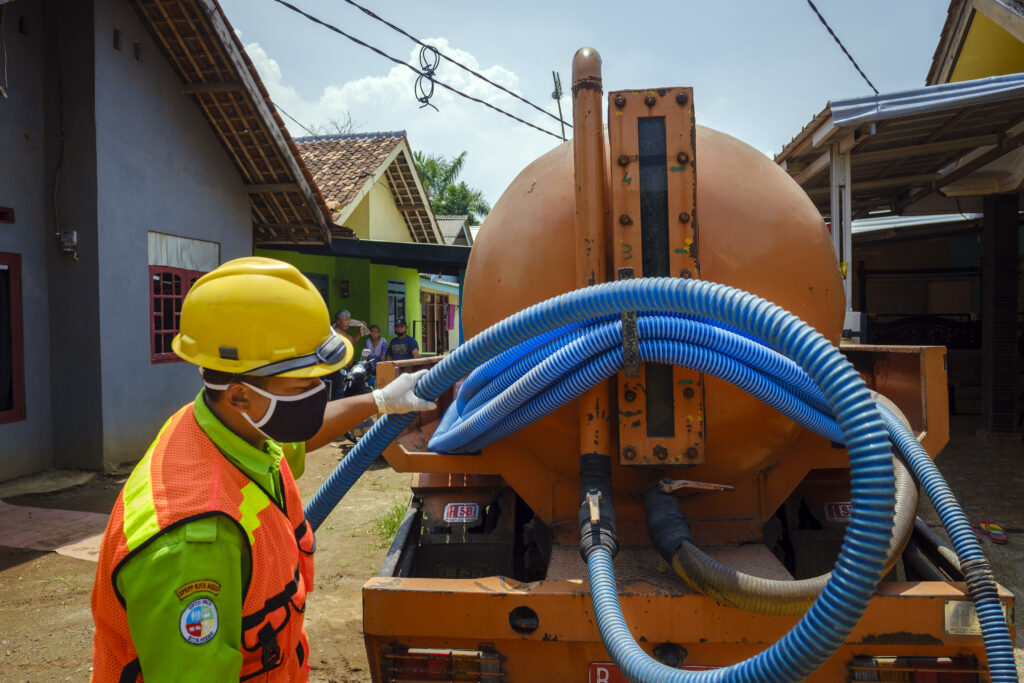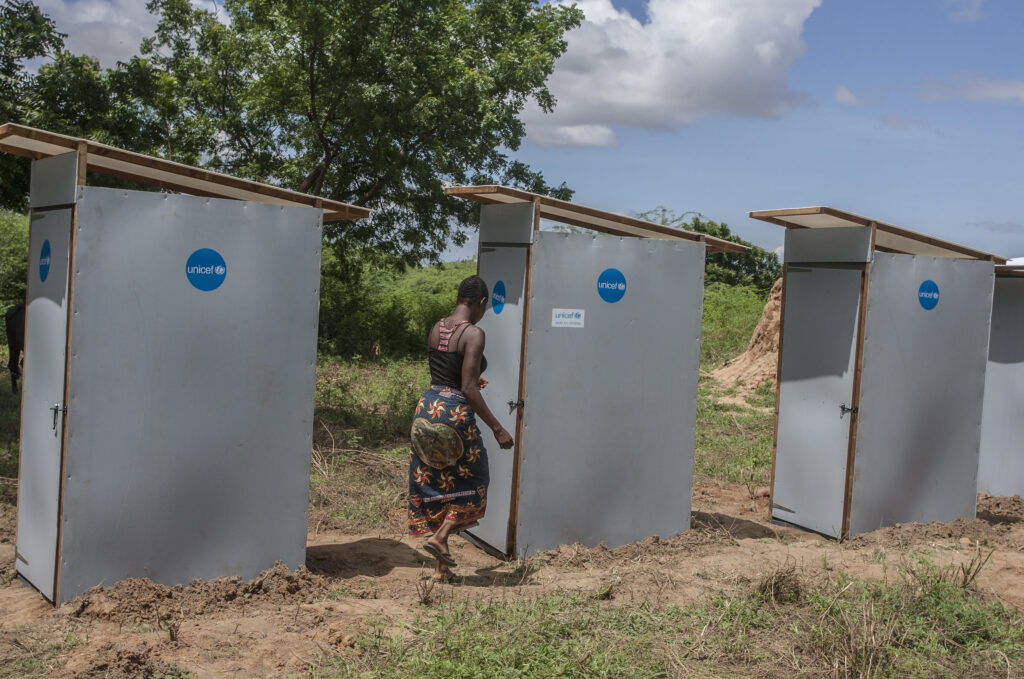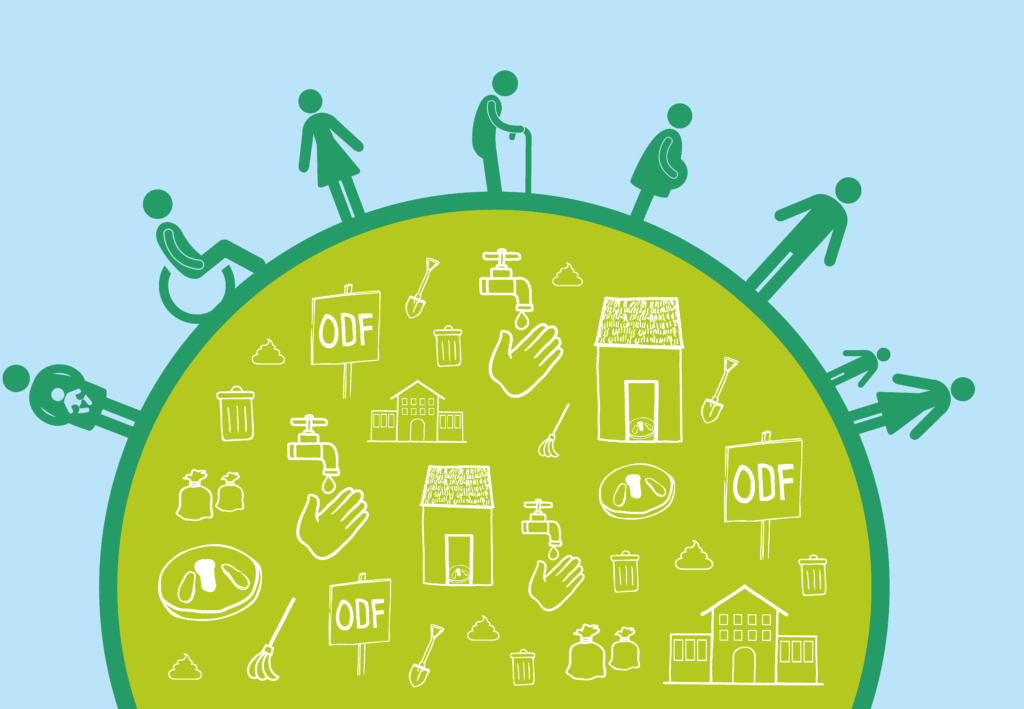In 2016, I contributed a chapter on slippage from open defecation free (ODF) status across Africa to the book Sustainable Sanitation for all. I wrote from the vantage point of Regional Sanitation Specialist for UNICEF’s Eastern and Southern Africa office in Nairobi, covering 21 countries, many of whom were recently embarking on national ODF programming. The chapter suggested that slippage was significant – that, according to UNICEF evaluations and internal reporting, over a five-year horizon, up to a 50 per cent return to open defecation (OD) behaviour could be expected. Slippage of the magnitudes described in that chapter and confirmed by other studies indicated that ODF outcomes were not stable and required further inputs in these areas, in particular to continue on the intended trajectory and to ensure return on investment for governments and donors alike.
A few priority areas were put forward at the time and the motto ‘beyond ODF’ became a mantra for practitioners in my region, encapsulating a need to put more emphasis on:
- post ODF follow up – whether technical or otherwise – to support transition to higher, safer service levels and
- the strengthening of sanitation and ODF monitoring in broader monitoring frameworks to support informed policy and integration into national health and development agendas.
Safer service levels
Today, as we head into the mid-term review period for the Sustainable Development Goals (SDGs), it’s clear that progress is being made when it comes to ODF. The world is indeed on track to reach elimination of open defecation by 2030. However, transition to higher sustained service levels remains elusive and this challenge – reaching safely managed service levels – will not be achieved without a four-fold acceleration in progress. Where we are seeing this kind of acceleration is in countries with strong government leadership in sanitation at the highest levels of government, where action is being taken on intractable issues of comprehensive policies with corresponding institutional accountabilities and coordination, financing strategies, monitoring frameworks and capacity.

Enabling environment
The GLAAS report (December 2022) shows that progress in the enabling environment has been equally slow. Of the 118 countries participating in the recent GLAAS survey, only 4% had sufficient resources to implement sanitation policies in rural areas and only 8% in urban contexts. On capacity, 61% of countries reported having less than half the trained professionals needed to service on-site sanitation systems and fecal sludge management. This is a big problem because, as of 2020, more people are using on-site sanitation systems than sewers. The need for more well-trained workers is an urgent issue. On data, we just aren’t collecting the information along the sanitation chain needed to manage the risk of pathogens so while JMP has 120 countries reporting on safely managed sanitation (SMS), less than a quarter of countries reported performing sanitary inspections at premises and along the sanitation chain. This lack of data poses a major barrier to measuring progress and having informed policies.
Access to services is only the tip of the iceberg, with systems strengthening needing far more attention to truly accelerate progress.
Sanitation policy initiatives
Promising new initiatives like the Africa Sanitation Policy Guidelines (ASPG) are instrumental in making this step change for sanitation. Since its launch in 2022, countries across Africa – Sierra Leone, Cameroon, Kenya, Ethiopia, Zimbabwe and Ghana, among many others are taking the first steps toward assessment of national policies for safely managed services and in the process making strong recommendations towards the necessary institutional reform that comes with this shift.
In Sierra Leone, a recent multi-ministry sanitation policy review under the ASPG initiative and with the strong leadership of the government, uncovered an environment in which sanitation policy was fragmented across multiple agencies. The resulting new Sanitation Policy Implementation Guidelines, a government policy instrument, makes bold recommendations for a stand-alone sanitation policy addressing the full value chain of sanitation, a stronger accountability framework and a corresponding financing strategy.
Similarly, Kenya, the first country adopter of the ASPG process, developed a new comprehensive policy for sanitation that’s had implications on the coordination structures and financing arrangements required to meet higher service standards across the country. Zimbabwe’s review of national policy has led to a policy brief that informed development of a new policy set to be approved by end of 2023.

UNICEF’s response
UNICEF’s new Game Plan to Reach Safely Managed Sanitation is our response to the global challenge. It focuses largely on the enabling environment for sanitation, marking a significant change in tactics for the organization, not only in terms of ambition and in the way we work. Of note is the focus on leveraging collective action and partnership to support and ignite government leadership and the focus on more indirect results, targeting the policy environment for sanitation. With this shift in approach come challenges for UNICEF and other practitioners, for example in terms of monitoring indirect results, resourcing activities and showing progress and contribution to larger sector reform. Monitoring indirect results is something the sector at large will need to come to grips with as the decade of the SDGs comes to a close:
- How have we impacted change at country level?
- What are the most effective interventions that practitioners can support?
- What are catalytic activities in supporting systems change for sanitation?
Climate resilient sanitation
While we consider safely managed sanitation, it is also important to recognize that SMS is not always the same as climate resilient sanitation. Understanding the additional requirements needed to meet the climate resilient standard is critical and there is a need for this to be addressed in current approaches. However, just as there is a current gap in local contextualization of the SMS standard, there is an even larger gap when it comes to climate resilience. Ensuring that countries can be supported in taking these considerations into account when designing national programs and standards is a clear challenge ahead, underlining the importance of a systems level approach. Ensuring that sanitation is considered in the national climate rationale as part of national climate action plans can also benefit from further prioritization and resourcing. To date, very little financing has been leveraged for sanitation and this is an area that clearly could benefit from further operational research and attention.

Moving forward
Looking forward, it’s important to acknowledge the great strides the sector has made in eliminating open defecation, recognizing and meeting the behavioural challenges of sanitation at the community and household level to a point where we are currently on track to meet the SDG targets for eliminating OD.
At the same time, there is a clear imperative to engage with sanitation as a foundational public health service requiring government commitment, investment and public policy environment to sustain. As such, supporting governments to strengthening sanitation systems from the policies, to the financing, monitoring and needed innovations and capacity both at local and national levels is critical to ensure scalability and sustainability of any progress made in services delivery at the local level.







